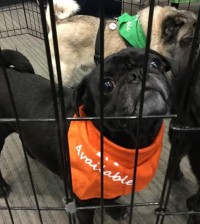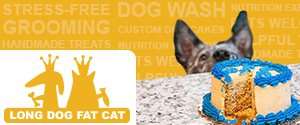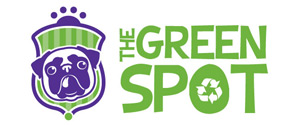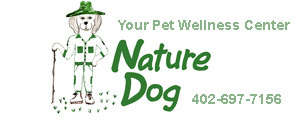- Do you subscribe to Dharma Dog Training’s Newsletter? You should.
- A Unique Campaign from The Humane Society of the United States
- Rabid bats in Omaha- Stay safe, prepared with these tips
- Springtime Activities in Omaha
- Mill Dog Monthly from Bailing Out Benji
- World Spay Day, Legislative Alert in Nebraska
- Attend the Nebraska Rescue Council’s monthly meeting this Saturday
- Five Hard-to-Ignore Reasons to Adopt!
- Paws in Pink to Benefit Breast Cancer Foundation
- VCA, Inc. Acquires MidWest Vet Specialists from Kansas State University
5 Ways to “Go Green” with your pets

There are countless things you can do, big and small, to make a positive impact on the environment. “Going green” isn’t just a trend, it’s a new way of life for those of us who are looking to make the world a little cleaner for the future. And for those of us with pets, here are five great ways to “Go Green.”
1. Buy in Bulk
Buying things in bulk will help you in two ways. One, it will help you cut down on the number of trips you have to make to the store. This will also help cut down on the packaging costs. Less packaging you toss out means less “stuff” that goes to a landfill or recycling facility, too.
2. Recycle, Recycle & Recycle!
A recent study found that less than 20 percent of owners who feed wet food to their animals recycle the containers food comes in. A little over 50 percent of cat owners recycle their empty food cans. Help boost that number by recycling cans, used-up plastic food bowls and toys, and anything else you can.
“It’s important for people to be aware of just how many cat food cans are currently sitting in landfills,” Mark Brodeur, Director of Environmental Sustainability for Nestle Purina said in an article that accompanied its research.
Check your pet food bags for the recyclable arrows, too. If you don’t see the recyclable arrows don’t worry! You can send your dog food bags to TerraCycle for free and then they will melt them down and repurpose them.
3. Use biodegradable waste bags
You may think that you are putting those grocery or newspapers bags to good use by repurposing them into poop bags, but it actually makes the situation worse. Plastic bags are not biodegradable, which means when you send them to the landfill with poop, that’s where they will both stay.
Although some poop-bag brands may claim to be biodegradable, it’s important to do your homework. The Federal Trade Commission requires that for something to be biodegradable it has to decompose in under a year.
Instead, try these compostable brands: BioBag, PoopBags, Earth Rated PoopBags, Flush Doggy, Harry Barker “no. 2” Bags, Dogipot and Eco Dog Planet Doggie Waste Bags.
Also, while you’re thinking about it, don’t put plastic bags in your recycle bins. Sorters say plastic bags often clog up recyclable sorting machines. Take your unused plastic bags back to the grocery store; often, there’s a bin you can put them in to be repurposed safely.
4. Choose an environmentally friendly cat litter
A lot of popular cat litters use bentonite clay (that helps clump cat litter) and the stuff is usually sourced from destructive strip mines. These litters are also non-biodegradable.
Litters can be made out of just about everything, including wood shavings, paper, and even corn and wheat products.
There have been questions raised about the safety of a corn-based litter because of the possibility of Aflatoxins. Corn-based litters are carefully packaged to keep moisture out to prevent aflatoxins but there is no foolproof way to control it once the bag is opened.
In any case, cat litters that are made of basic, recognizable materials are more environmentally safe than clay-based litters.
5. Make your own toys!
You can make a lot of toys out of products that you would’ve otherwise have thrown away. Cats are easily entertained by toilet paper rolls or an old T-shirt can be turned into a pom-pom. Dogs can easily be entertained by wrapping a bottle in a T-shirt. A simple Google search fill provide many more ideas.
Saving a little cash is another plus that comes from making your own “anything,” including toys.
Use these tips and seek more opportunities to make our planet a little safer and cleaner!
Related Posts
Latest News
-
3 Tips for Pet Owners on Training Rescue Dogs
Owning a rescue dog can take some work compared to...
- Posted 2 weeks ago
- 0
-
Choosing the Right Pet for Your Lifestyle
Are you thinking about getting a pet but unsure what...
- Posted 4 weeks ago
- 0
-
How to Make Your Rescue Pet as Comfortable as Possible
Did you bring home a new pet from a shelter...
- Posted 2 months ago
- 0
-
How Having A Pet Can Change Your Life
Having a pet can open your heart in ways that...
- Posted 7 months ago
- 0
-
How To Improve The Life Of Your Senior Pet
Do you have an elderly fur baby and want to...
- Posted 7 months ago
- 0
-
Springtime Activities To Enjoy With Your Furry Friends
Are you preparing for warmer weather and want some ideas...
- Posted 8 months ago
- 0
-
Pros And Cons Of Microchipping Your Pets
Have you considered whether your pets should be microchipped and...
- Posted 9 months ago
- 0






















You must be logged in to post a comment Login